
Meet the Meteorite Hunters Who Rush In When Space Rocks Crash to Earth
For this community of “space cowboys,” entrepreneurs, and enthusiasts, a fireball streaming across the sky offers big risks and bigger rewards—and new tech is heating up the competition.
It’s around 8 a.m. on April 27, 2022. A woman outside of Hattiesburg, Mississippi, is relaxing in her hot tub, lulled into a quiet calm as her horses neigh in the distance. Suddenly, a blinding red-yellow light shoots across the sky. In Baton Rouge, Louisiana, a man stuck in traffic sees the same light ignite the heavens—“like a welder’s torch,” he’d later write in an eyewitness account. Moments later, a series of sonic booms thunder across southwestern Mississippi so loudly that NASA would equate the event to the detonation of three tons of TNT. Local officials in Vicksburg assure worried residents that the nearby nuclear power plant hasn’t exploded. Indeed, there is no earthly reason for the booming light show that erupted across the southern United States that Wednesday morning. This event is wholly extraterrestrial.
Hours later, NASA confirmed that the disturbance was a fireball, a bit of outer space hurtling toward Earth at more than 25,000 mph. Nearby weather radars picked up the unique signatures of falling meteorites near the small, unincorporated town of Cranfield, Mississippi, just east of Natchez. Over 70 eyewitnesses file reports about the fall on the American Meteor Society website. Online Facebook groups, like the Meteorite Club, start posting news stories about the event. And all around the country, meteorite hunters take note: There might just be space rocks on the ground in Mississippi. In Tucson, Arizona, Ashley Humphries starts making travel plans with her friend Mark Lyon. In Eureka Springs, Arkansas, Steve Arnold contemplates hopping in his pickup truck. In Connecticut, Roberto Vargas looks into flights. If there really are meteorites on the ground, hundreds of thousands of dollars could be on the line. But these hunters will need to act fast if they want a piece of it—literally.
NASA satellites, weather radar, and the internet have changed meteorite hunting forever; particularly in the United States, enthusiasts and entrepreneurs now have unprecedented access to technology that can tell them just where to go looking for rocks. It’s a massive shift from the previous approach: relying on word of mouth, putting up flyers, and catching local news stories to learn about falls. Back then, once hunters found a meteorite, they had to find a buyer, which was easier said than done—there wasn’t much of a globally-connected market for space rocks at the time. Now, meteorites sell at major auction houses for hundreds of thousands of dollars. Famous meteorites, like the 15.5-ton Willamette Meteorite, the largest ever found in the U.S., are valued in the millions. And competition to find these space rocks can be fierce.
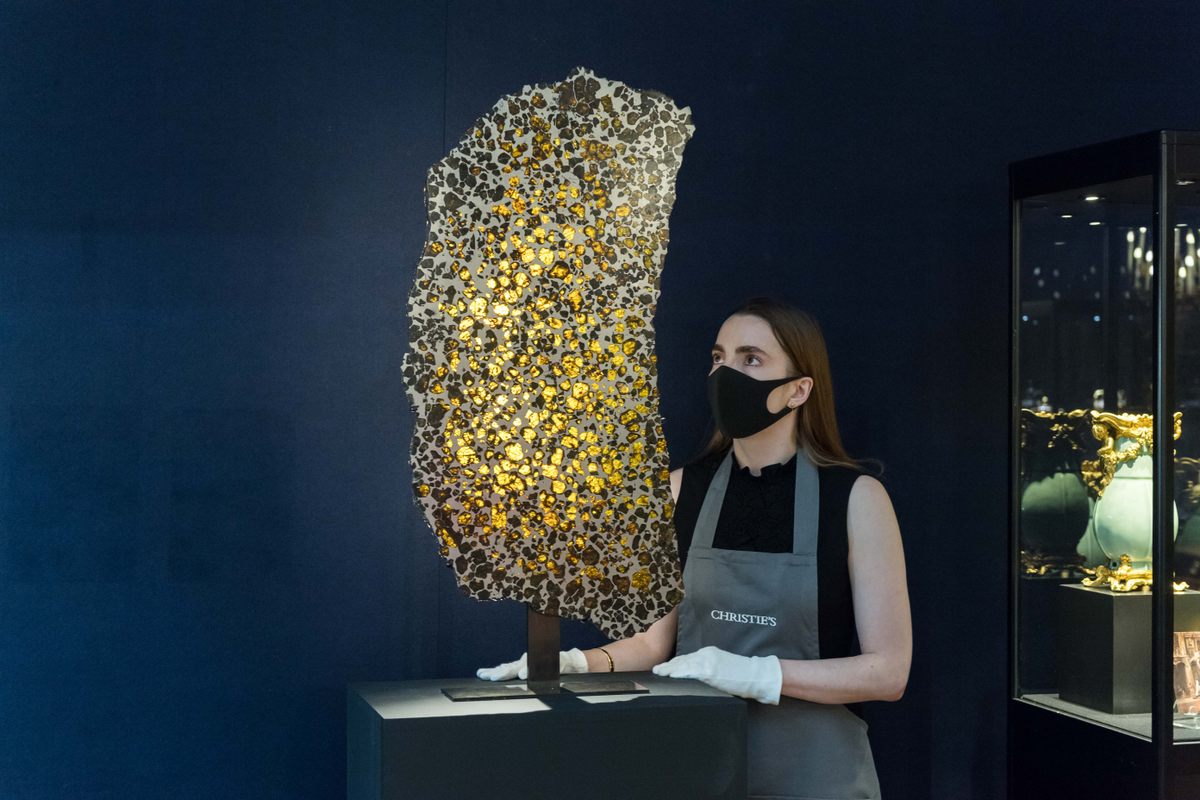
Oftentimes meteorite hunters shell out thousands of dollars during their search only to return home empty-handed. “That’s the risk, right?” says Vargas. “I can spend $2,000 going to [Mississippi] and hunting for five days and accommodations and everything and then we find nothing,” which has happened more often than not.
Not moving fast enough also carries risks, including losing out to other hunters. “It’s just like a giant race,” says Humphries. “You’ve got so many things working against you, including time.”
Even several days after the Mississippi fall, no one knows for certain whether any space rocks crashed to Earth that Wednesday morning. By some estimates, 99.5 percent of meteors that flash across the sky burn up in our atmosphere without ever making it to the ground as meteorites. “Me personally, I like to wait until the first couple [rocks] have been found,” says Vargas, and he’s not alone. Every hunter has to weigh the financial gamble of the hunt. It creates something of a waiting game—will this fireball be the 1-in-200 chance to hit the jackpot?
Early civilizations saw fireballs as portents of good or evil, of military victories or the death of kings. In ancient Greece, Apollo’s temple at Delphi enshrined a space rock. More than 1,500 years ago, across what’s now Ohio, Indiana, and Illinois, the Hopewell culture included beads and earrings fashioned from meteorites in the burial mounds of their high-ranking dead.
While other cultures, around the world and across the centuries, have shown similar fascination with this otherworldly material, it was only in 1794 that German physicist Ernst Chladni proposed that meteorites came from outer space and plunged down to Earth in fiery flashes of light. His hypothesis was ignored for more than a decade. Then, in the early afternoon of April 26, 1803, hundreds of stones bombarded the French market town of L’Aigle. Physicist Jean-Baptiste Biot investigated and, after interviews and mineral analysis, confirmed the rocks were, indeed, extraterrestrial. In his subsequent report for the Académie Française, he called the event “one of the most astonishing phenomena that men have ever observed.”
By the first half of the 20th century, a handful of individuals had turned looking for these “astonishing phenomena” into a career. In August 1923, Kansas biology professor Harvey H. Nininger read an article in The Scientific Monthly about meteorites and traded his university gig for a Ford Model T and the promise of adventure while looking for space rocks with his wife, Addie. A decade later in the 1930s, dry-goods broker Oscar E. Monnig also began hunting for meteorites, amassing a collection now on display at the Texas Christian University in Fort Worth. In the 1940s, astronomer and mathematician Lincoln LaPaz began his own searches in New Mexico (encountering a handful of extraterrestrial beings along the way, or so he’d claim).
At the time, meteorites were largely viewed as curiosities. But Nininger, Monnig, and LaPaz began to change that. They wrote books, articles, and monthly newsletters. They sold their meteorites to major museums as astronomers began learning more about the rocks they uncovered, including that the average meteorite is 4.5 billion years old; many actually predate our solar system. Analysis revealed that meteorites came from asteroids, the moon, other planets, and even comets. Finding them when they landed, however, involved a good deal of guesswork and luck—until now, thanks to scientists like Marc Fries.
It was still Wednesday, April 27th, the day of the fall, when Fries heard about the Mississippi fireball. The NASA planetary scientist was just starting to wrap up his workday at the Johnson Space Center in Houston when a colleague emailed: “Hey, we had a really nice one over Mississippi, you might want to take a look at it.” Since 2005, Fries has been building a model to track falling meteorites. Using weather radar and then factoring in wind speeds, Fries’s model (which he let his son name “Jörmungandr” after the Old Norse sea serpent) predicts where meteorites might land. It’s the kind of tech that Nininger, Monnig, and LaPaz could only have dreamed of. But that Wednesday, Jörmungandr, through no fault of its own, failed.
“I made a mistake,” Fries says. “I’ve done this a million times, and this was a dumb mistake. I pulled up the weather radar using the local time, which was 8:03 a.m.” Radar data, however, is recorded using UTC time (Coordinated Universal Time). “I looked at the wrong time,” Fries says. “And I was like ‘there’s nothing here.’” There may have been a fireball, but he saw no indicator of material landing on the ground. It was not the 1-in-200 meteorite. Or so Fries thought.
The next day Fries got an email from a hobbyist who said, “I’m seeing some really interesting radar returns. I’m surprised I haven’t heard anything from you.” Fries looked again, using the correct timestamp. “Bam! There it was,” says Fries. “This was an enormous meteorite fall!” The fall showed up in 11 different radar sweeps from four different radars, making it one of the larger U.S. falls in the past ten years.
Fries spent the next day and a half collecting all the data points Jörmungandr needed. On Friday, April 29th, he ran the model, which he describes as a slow, “sophisticated Excel spreadsheet.” By midnight, Fries had his result: the fall’s approximate strewn field, a roughly triangular zone where meteorites (if there were any) would have most likely landed. Fries had his treasure map.
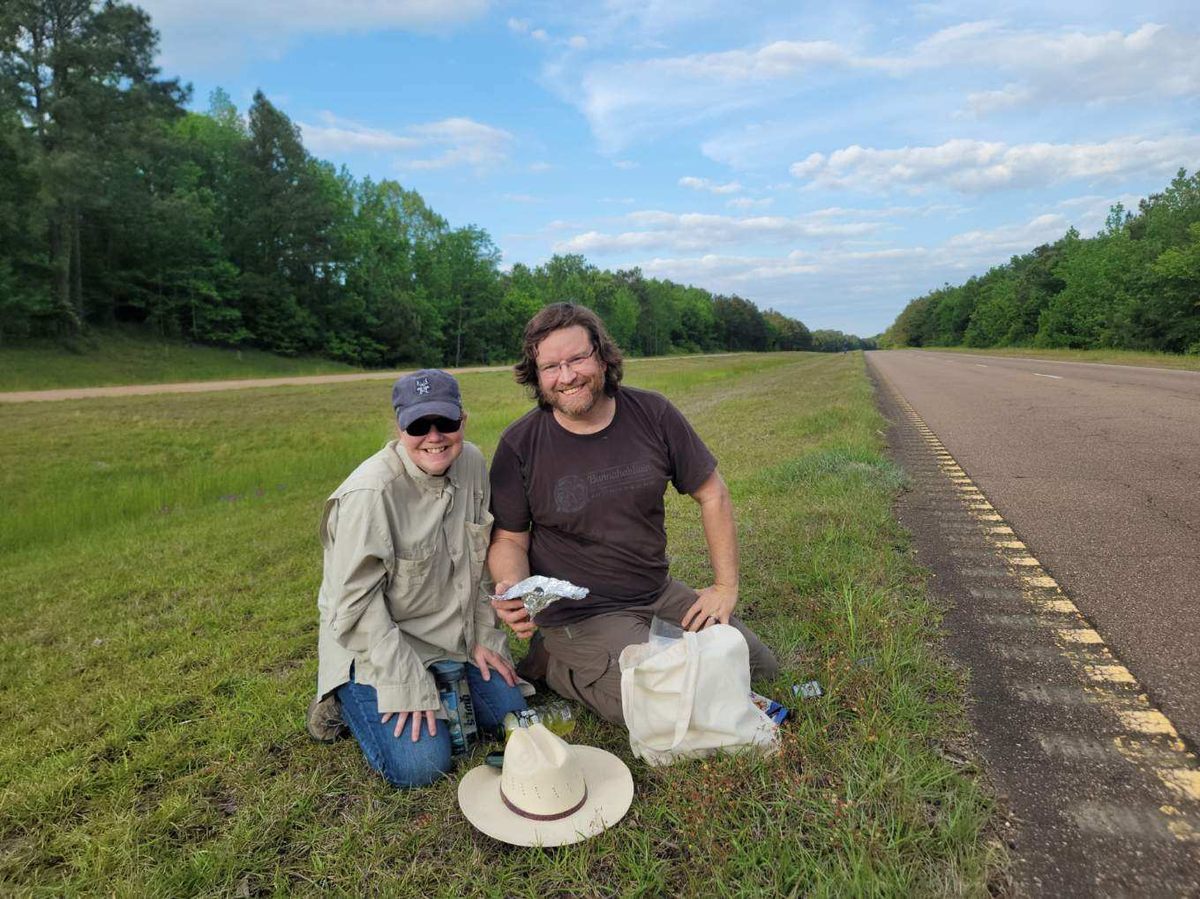
Fries told his wife, Rice University science writer Linda Welzenbach-Fries, “We got to go. There’s meteorites.” Early on Saturday morning, they threw a bunch of stuff in the car and headed to Cranfield, Mississippi. “We arrived around 1 p.m., and I said let’s just drive the width of the fall area and do some recon,” says Welzenbach-Fries. They eventually parked along U.S. Highway 84, which bisected the strewn field. Fries started walking the highway’s southern shoulder while Welzenbach-Fries walked on the opposite side of the asphalt.
Welzenbach-Fries and Fries first met in 2009, when he traveled to Washington, D.C., to study the Smithsonian’s meteorite collection—a collection that Welzenbach-Fries happened to manage. Soon after they met, the pair went out searching for pieces of the Lorton Meteorite, which in 2010 fell only 10 minutes away from the museum. Over the last decade, the couple has hunted numerous meteorites together—but always unsuccessfully.
“When you start looking for meteorites, the first thing you do is you calibrate your eyes to what is typical,” says Welzenbach-Fries. As they scanned the beige-colored gravel along the highway, the pair trained their eyes for anything that looked like a black, charred bit of rock. Around 2:30 p.m., Welzenbach-Fries saw something and called Marc over. “It’s too perfect,” he recalls thinking. “I grabbed a stick and poked it and it went squish.” Meteorites don’t go squish; this was just a stray piece of tire rubber.
They kept looking. But not for long. “Literally within ten minutes, I found the first one,” says Welzenbach-Fries. Her husband ran over. “I said, ‘It’s a meteorite, right?!’ And he’s like, ‘oh yeah, it’s a meteorite,’” she remembers. “I think there was a whole minute of ‘okay, what do we do now?’”
After the initial shock and delight, the scientists got their collecting kit, which included tin foil baked at 930 degrees Fahrenheit to destroy any contaminants. They wrapped the fragment in the foil and placed it into a nylon bag. Later, as the sun sank behind the trees and shadows grew long, Fries found his own meteorite. After more than a decade of searching for meteorites, the pair had finally found their space rocks.
Fries and Welzenbach-Fries won’t make a dime from their discoveries in Mississippi. They’ll be putting their finds directly into the hands of scientists for study and curation. It’s something most hunters do—at least, kind of. “We have a symbiotic relationship with the scientists that classify meteorites, where we donate a portion of what we bring back and they use that for science and, in return, they classify it, which makes our jobs easier when it’s time to, you know, make some money,” says Vargas.
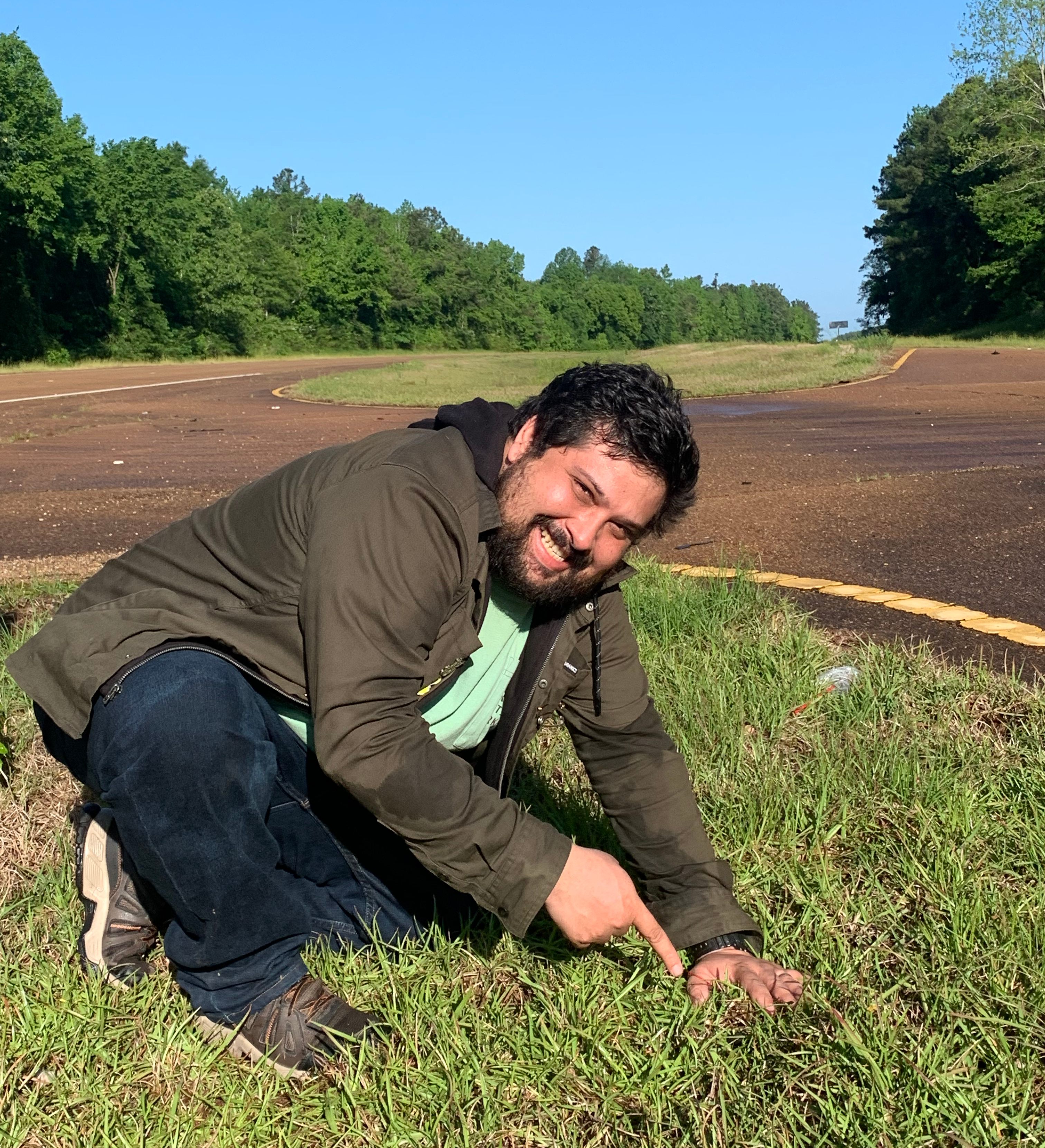
Vargas was already in Cranfield on Saturday, April 30th, when Fries and Welzenbach-Fries found their rocks. He had arrived the day before with his friend Matt Stream. By Saturday, the pair had scoured the ground for hours looking for space rocks; they found nothing. The terrain was horrible, says Vargas—tall grasses, ticks, mosquitoes, snakes. They were tired and hungry and decided to drive back to the hotel. That’s when Vargas noticed a guy on his knees waving frantically: Marc Fries. “I’m like, that guy found something cool,” says Vargas. “I pulled over and ran across the highway and I was like, ‘did you find a meteorite?’ and he was like, ‘yeah!’” It was exciting news for Vargas—he was right where he needed to be. Now, he just needed to find a rock of his own.
More hunters were on their way to rural Cranfield. Fries had posted his model of the fall on NASA’s website Friday evening and news of Welzenbach-Fries’s discovery was already making the rounds. Everyone now knew for certain that there were rocks on the ground. But no one knew how many—or how quickly they’d be snatched up.
Time was of the essence. By the end of the weekend, Steve Arnold, who cohosted the Science Channel’s Meteorite Men a decade ago, had arrived from his home in Arkansas. After getting a call from her friend Mark Lyon, Humphries hopped on an early Monday flight from Tucson to New Orleans and drove with him to the fall site. While Lyon and Humphries are among the hunters who team up, search together, and divvy up their finds, others prefer the lone wolf approach.
“It’s like ‘X marks the spot’ on the treasure map and everybody’s a pirate,” says Humphries. “They don’t want to share the treasure. That doesn’t mean that they don’t like you necessarily, or that they don’t want to be your friend, but when it comes to business, it’s business.”
But sometimes, hunters don’t play fair. “You gotta be careful who you trust because they’ll send you off in the wrong direction,” says Humphries. “There are some cutthroat, not nice people,” adds Arnold.
Arnold is something of a celebrity among meteorite hunters. “Meteorite Men was really big for me,” says Vargas, who is currently taking time off from his career as a mental health clinician to hunt full-time. “That’s how I learned about meteorites—watching and rewatching old episodes.” The show, which aired 2010-2012, helped to introduce the hunt for space rocks to a general audience, Vargas says. But, before Steve Arnold, there was Bob Haag.

Despite the earlier work of Nininger, Monnig, and LaPaz, meteorite hunting was still in its infancy when Haag got going at age 23, back in the 1980s. He first placed ads in local newspapers—“who’s got meteorites for sale?” he recalls—but then started hunting fall sites himself. Collecting the rocks held plenty of appeal for the self-proclaimed “space cowboy.” “I didn’t need to wear, you know, a suit or an anti-gravity suit,” Haag says. “These pieces of outer space came to us.”
Over four decades of meteorite hunting, Haag became a titan of the field. His noteworthy finds include the first known lunar meteorite back in 1990, which he keeps in a large, secure vault in his Tucson home. Yet, for years, interest in meteorites was largely limited to academic circles. That started to change, says Haag, with the first big mineral show held in Tokyo in the late 1980s, which featured an array of specimens from the natural world, from fossils to crystals. At the time, Japan’s economy was booming and the wealthy were looking for something to spend their money on. Haag figured he’d offer up some meteorites. “We sold out,” says Haag. “It was insane.” Buyers would show up spy-movie-style with suitcases of money. “It was that kind of money, millions of dollars,” he adds. “Nothing like this had ever been in town before. It was like the opening of the circus.”
Eventually, the bubble burst in Japan when the country experienced a recession, says Haag. But the success of Tokyo showed him there was potential for other lucrative markets—including, Haag figured, in the U.S.
Haag started calling himself “the Meteorite Man” and published meteorite catalogs, field guides, and books. He was featured on the cover of Sky & Telescope in 1993 and in National Geographic. He was a guest on David Letterman. And, eventually, major auction houses, including Phillips and Christie’s, came knocking—primarily with the help of a band manager and meteorite enthusiast named Darryl Pitt. Haag would inspire Pitt to further revolutionize the field of meteorite hunting.
Pitt first got turned on to meteorites when a friend invited him along to a “rock show.” Thinking it was a concert, Pitt said “heck yeah.” “But it was a real rock show. They were selling rocks,” including meteorites, says Pitt. He was instantly hooked. Eventually, he met Haag in the early 1990s. “I was really, really struck by his charisma, his enthusiasm,” says Pitt. “He’s a real character.” The pair began a friendship and mentorship that helped Pitt establish himself as a reputable meteorite middleman. When Phillips wanted meteorites for its first-ever natural history auction in 1995, it turned to Pitt.
On the day of the sale in New York City, 15 news trucks lined the streets outside of the auction house, with camera crews waiting to see just how much these bits of space could sell for. As Haag had foreseen, meteorites could go for a pretty penny—hundreds of thousands of dollars. “And suddenly things started taking off,” says Pitt. Thanks to people like Pitt and Haag, there’s now an established and growing market for space rocks.
New hunters coming to the field, including Vargas and Humphries, reap the benefits of that groundwork. New technology, like Fries’s model, is making finding meteorites easier than ever. Facebook groups and online communities help connect meteorite enthusiasts around the globe. But all those advances come with drawbacks. Vargas estimates that the number of meteorite hunters has tripled since 2019, and competition is more intense than ever.
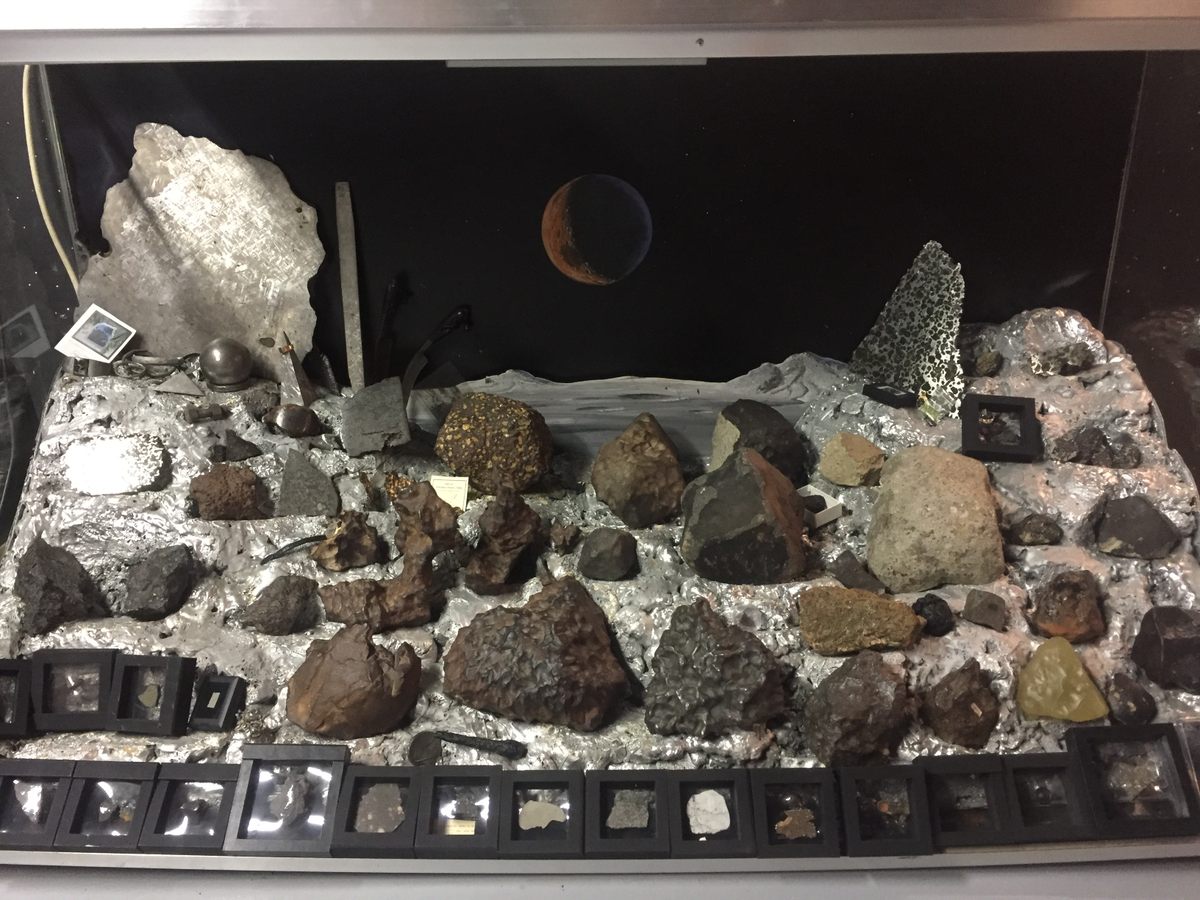
Back in Mississippi, hunters were still scrambling to find more meteorites. Humphries almost overheated in the Mississippi sun after spending hours in the field. Arnold rigged a magnetic rake on the back of an ATV to comb through a landowner’s field (almost seriously injuring himself after the brakes suddenly failed). Vargas got his rental car stuck in the mud. But as of Sunday morning, no one except Fries and Welzenbach-Fries had found any space rocks.
Vargas and Steam got an early start that morning, around 8 a.m. It had rained the night before, which meant more mud. But Vargas badly wanted a meteorite of his own. Despite years in the field, he had never found a meteorite himself. He’d only ever cut deals with landowners who’d come across rocks—by law in the U.S. and some other countries, meteorites belong to whomever owns the property where they land.
When Vargas first started hunting meteorites, “my family thought I was insane,” he laughs. “My family was like, ‘What are you doing? You’re going to go to some country you’ve never been to to go buy rocks? You’re going to take $10,000 out there? You’re crazy.’” When Vargas turned the $3,000 he had spent on “rocks” into $40,000 in a day, they saw it differently. “The next time I went they were like why don’t you take 200 of my dollars, you know, to invest in it a bit.”
That Sunday morning in Cranfield, Vargas and Stream started looking where Fries had found his meteorite the day before. They walked west along the highway, scanning the mowed grass of the median. After about 45 minutes, Stream exclaims, “I found it!” Vargas ran over. There, resting in the grass, was a 20-gram piece of meteorite. Weighing less than an ounce, part of the rock was black and charred while the rest was light and grainy—a promising sign. Upon entry, the entire surface of the meteorite would have gotten covered with a black fusion crust. Because that crust only covered a portion of Stream’s meteorite, it likely broke off from a bigger piece. There were more meteorites to find.
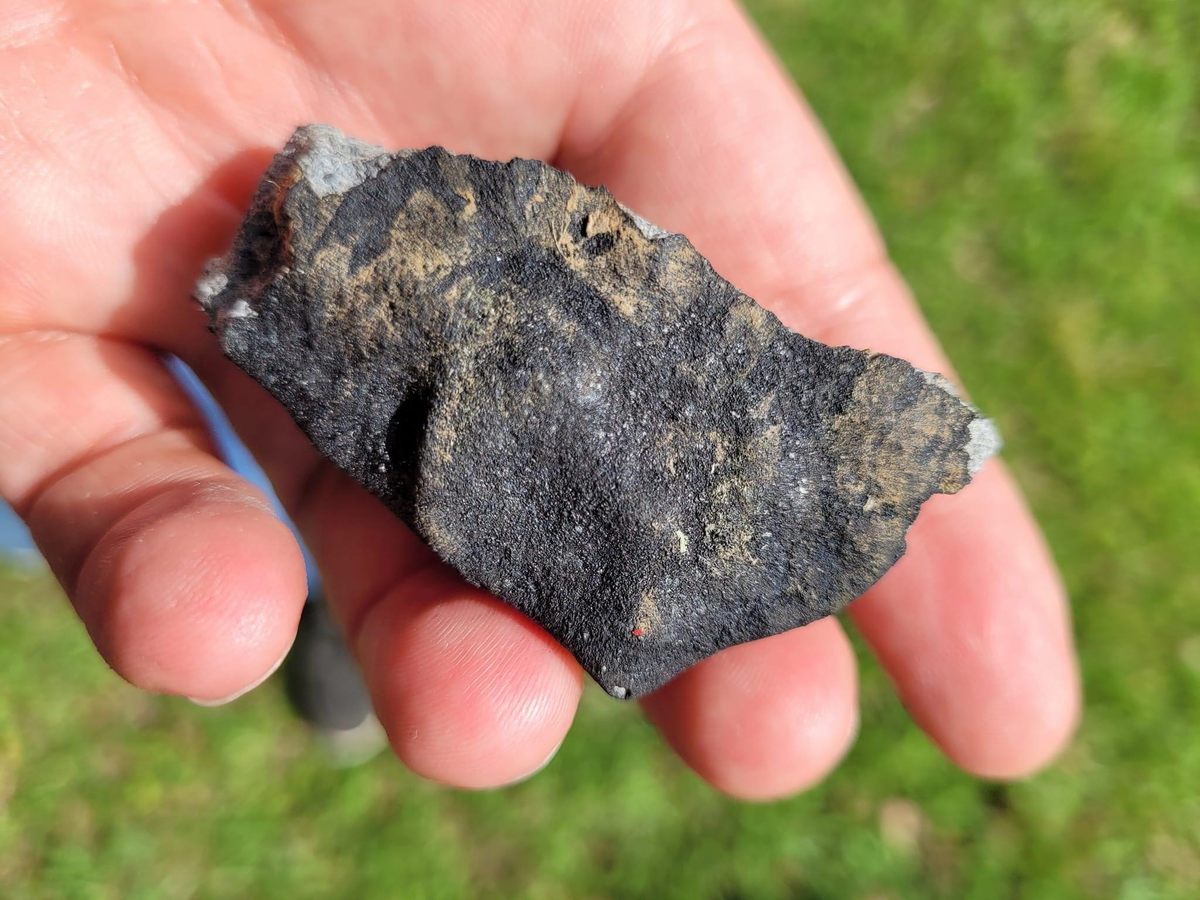
They kept looking. Ten minutes later, Vargas spotted one—a 26-gram, fusion-crusted meteorite fragment. After years of hunting, Vargas had finally found his meteorite. “I can’t explain it. It was surreal. I called my partner. I was almost crying with excitement,” says Vargas. The pair eventually found a grand total of 300 grams (less than a pound) of meteorite fragments there—a massive haul. Since returning home, Pitt and Vargas have discussed including some of Vargas’s finds in an upcoming auction.
Other hunters weren’t as lucky. Arnold and Humphries would both leave Mississippi with little more than some meteorite crumbs. But that won’t stop them from hopping on planes the next time there’s a fall. There’s something addictive about the chase. When it comes to meteorite hunting, “you’re both Indiana Jones and you’re also Buck Rogers and you’re Han Solo,” says Haag, who’s now largely retired, content to relax in his room-sized vault with his moon rock. “It’s real treasure and it’s real money,” he adds. “And it’s really, really fun.”

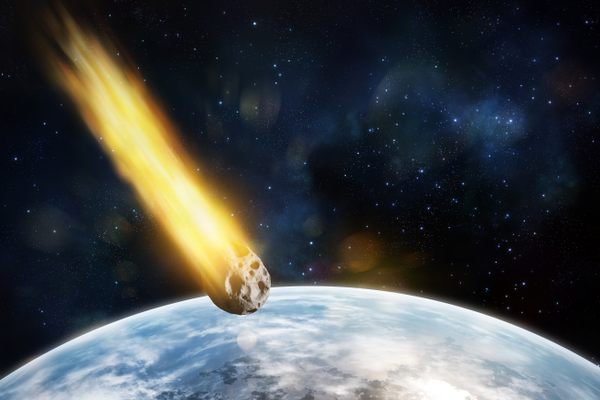

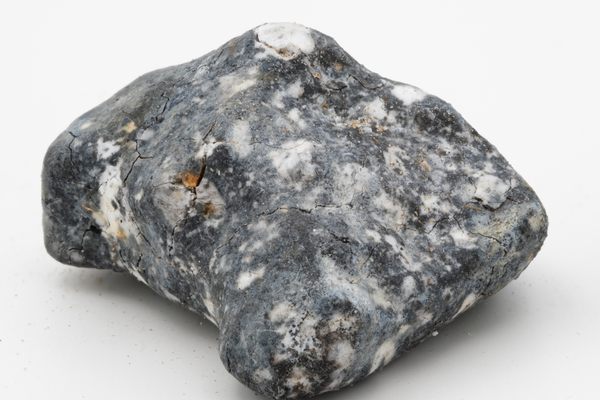
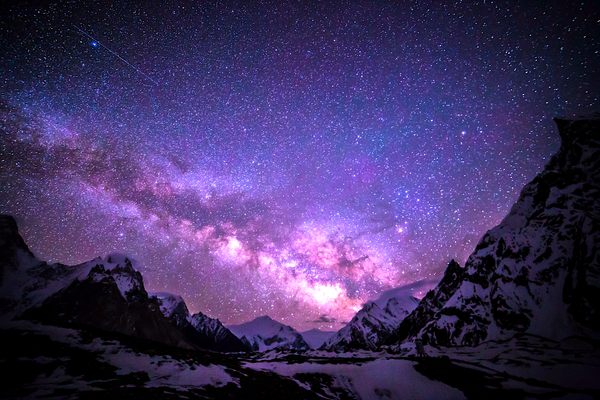




















Follow us on Twitter to get the latest on the world's hidden wonders.
Like us on Facebook to get the latest on the world's hidden wonders.
Follow us on Twitter Like us on Facebook